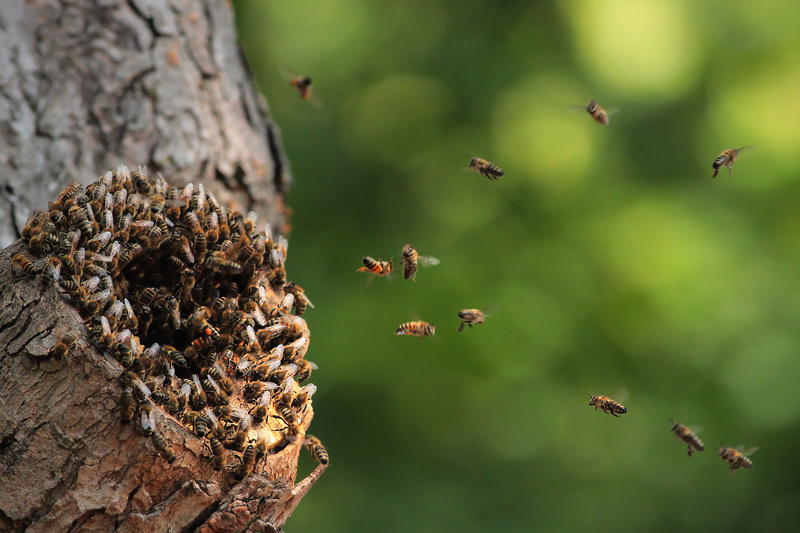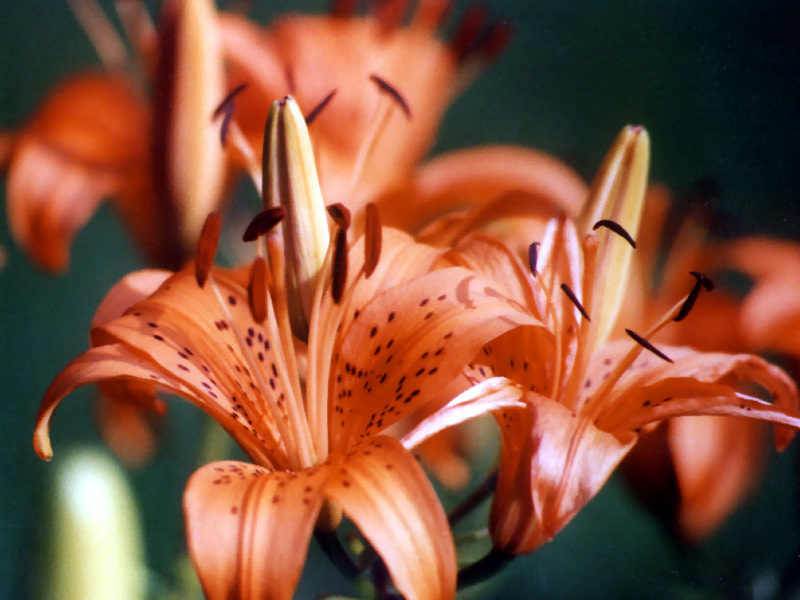Herb Gardening: A Green Thumb Adventure
Posted on 05/10/2025
Herb Gardening: A Green Thumb Adventure
Herb gardening is a timeless journey, filled with fragrant leaves, robust flavors, and bountiful harvests right at your fingertips. Whether you're an aspiring cook, a natural health enthusiast, or someone looking to spruce up your garden spaces, embarking on the adventure of growing herbs offers countless rewards. In this comprehensive guide, we'll explore the essentials and delights of herb gardening, ensuring your own green thumb adventure starts -- and flourishes -- with confidence.
Why Start an Herb Garden?
For centuries, fresh herbs have seasoned meals, healed wounds, and scented homes. Today, herb gardening is more popular than ever thanks to its accessibility and the unique benefits it offers.
- Flavor Freshness: Freshly picked herbs elevate culinary creations well beyond their dried grocery store counterparts.
- Cost Savings: Growing your own herbs is significantly cheaper than buying small packets at the market.
- Eco-Friendly: Homegrown herbs have a smaller carbon footprint -- no transportation or plastic packaging required!
- Therapeutic Joy: Tending to live plants is relaxing and contributes to mental wellbeing.
- Custom Variety: Enthusiasts enjoy experimenting with both common favorites and rare or heirloom herb varieties.

Choosing the Perfect Herbs for Your Garden
Selecting which herbs to plant is the first -- and possibly most exciting -- step in your herb gardening adventure. The best strategy is to combine culinary favorites with easy-to-grow options, especially if you're just starting out.
Most Popular Culinary Herbs to Grow
- Basil: Sweet, spicy, and essential for pesto, salads, and Italian dishes.
- Rosemary: Woody aroma, perfect for roasting meats and vegetables.
- Thyme: Earthy flavor, ideal for soups, stews, and Mediterranean cuisine.
- Mint: Cool and refreshing in teas, desserts, and cocktails.
- Parsley: A garnish star and flavor booster for a variety of dishes.
- Cilantro (Coriander): Bright notes indispensable in Mexican and Asian cooking.
- Dill: Pairs perfectly with fish, eggs, and pickled recipes.
- Sage: Robust flavor, fantastic in savory recipes and with poultry.
- Chives: Mild oniony greens for garnishing almost any plate.
Growing Conditions & Sunlight Requirements
Most herb plants thrive with at least 6 hours of sunlight daily. However, some like mint and parsley will tolerate partial shade. Research the specific requirements of each herb to ensure a flourishing herb patch.
Herb Garden Designs: Pots, Containers, or In-Ground?
One of the beautiful aspects of herb gardening is its adaptability. Whether you're dealing with a windowsill, balcony, urban rooftop, or backyard, there's a layout for you!
1. Container Herb Gardens
- Perfect for small spaces or beginners
- Allows easy movement for optimum sunlight
- Prevents aggressive growers like mint from overrunning other plants
2. In-Ground Herb Beds
- Ideal for gardeners with yard space
- Enables hearty perennial herbs to expand and naturalize
- Allows for larger harvests
3. Raised Garden Beds
- Great for improved soil drainage and weed control
- Reduces bending and makes garden care easier
- Suitable for both annual and perennial herbs
4. Vertical and Windowsill Herb Gardens
- Utilize wall space or windowsills in apartments
- Add visual greenery indoors
- Easy to water and harvest
Planting Your Herb Garden: Step-by-Step
Starting your own herb gardening adventure doesn't require expert skills! With a bit of planning and care, anyone can grow flourishing herbs.
- Choose Your Location: Find a spot with adequate sunlight and protection from harsh winds.
- Select Your Containers or Bed: Ensure good drainage. Use pots with holes or raised beds with quality soil.
- Purchase Seeds or Seedlings: Beginners often find starter plants easier, but seeds allow for more variety.
- Prepare the Soil: Use rich, loose, well-draining soil. Amend with compost for healthy growth.
- Plant Carefully: Follow seed packet or plant tag instructions for spacing and depth. Overcrowding can affect air circulation and health.
- Water Gently: Keep soil moist, not soggy. Herbs hate wet feet!
- Feed and Prune: Fertilize monthly with an organic liquid fertilizer. Pinch back growth to encourage bushiness and prevent flowering.
Organic Herb Gardening Tips
A major perk of home herb gardening is the peace of mind that comes from knowing exactly how your plants are grown. Opt for organic practices to ensure the freshest, healthiest herbs on your plate.
- Compost: Use homemade compost for nutrient-rich soil.
- Companion Planting: Grow herbs like basil with tomatoes to deter aphids and improve flavors.
- Natural Pest Control: Attract ladybugs and lacewings or use neem oil for pest management.
- Mulching: Maintain soil moisture and suppress weeds with a thin layer of mulch.
Troubleshooting Common Herb Gardening Issues
Even a seasoned gardener encounters challenges. Let's tackle the most common hurdles in your herb gardening journey and how to fix them:
Yellowing Leaves
- Cause: Often from overwatering or poor drainage.
- Solution: Allow soil to dry slightly between waterings. Check and improve container drainage.
Leggy, Spindly Growth
- Cause: Insufficient sunlight, overly rich nitrogen fertilizers, or plants crowded together.
- Solution: Move to a sunnier location. Reduce nitrogen-rich feed and ensure proper spacing.
Pest Infestations
- Common Culprits: Aphids, whiteflies, and spider mites.
- Solution: Spray with water to dislodge, introduce natural predators, or apply mild neem oil spray.
Herb Plants Bolting (Flowering Prematurely)
- Cause: Hot weather or skipped harvests.
- Solution: Harvest regularly. Grow cool-loving varieties early or late in the season.
Harvesting and Preserving Your Homegrown Herbs
The reward of any herb gardening adventure is the plentiful harvest. Use the following techniques to enjoy herbs year-round:
-
Harvesting Tips:
- Pick leaves in the morning after dew has dried but before the sun's heat.
- Use clean, sharp scissors or snips to prevent plant damage.
- Harvest by cutting just above a leaf node to encourage regrowth.
-
Preservation Techniques:
- Drying: Tie bunches and hang upside down in a warm, airy space away from sunlight.
- Freezing: Chop leaves and freeze in ice cube trays with a little water or olive oil.
- Infusing: Add herbs to oils, vinegars, or butters for delicious flavor all year.
Culinary Inspiration: Ways to Use Fresh Herbs
Your culinary options double -- even triple -- with a living arsenal of fresh herbs. Here's how to maximize your homegrown flavors:
- Basil: Make pesto, garnish pizzas, add to summer salads or cocktails.
- Rosemary: Infuse in olive oil, roast with potatoes, or bake into breads.
- Mint: Brew hot or iced teas, muddle in mojitos, or pair with chocolate desserts.
- Parsley: Brighten up tabbouleh, chimichurri, or sprinkle as a finishing touch.
- Dill: Top salmon, add to yogurt dips, or stir into scrambled eggs.
- Cilantro: Freshen up tacos, salsas, and stir fries.
Beyond the Plate: Additional Benefits of Herb Gardening
Fresh herbs aren't just for the kitchen! Here are other fantastic uses for your bounty:
- Aromatic Bouquets: Fresh or dried, herb sprigs add fragrance and charm to home decor.
- Herbal Remedies: Chamomile for calming teas; thyme and oregano as natural antiseptics.
- Pollinator-Friendly: Flowering herbs attract beneficial bees and butterflies to your garden.
- Crafting: Use dried herbs in sachets, wreaths, or homemade beauty products.
Tips for a Successful Herb Gardening Experience
- Start Small: A handful of pots on your windowsill is perfect for beginners.
- Keep a Journal: Note weather, watering, and harvests to refine your approach each season.
- Connect with Community: Swap cuttings and recipes with local gardening clubs or online groups.
- Try New Varieties: Branch out with lemon balm, stevia, or exotic herbs as your confidence grows.
Herb Gardening Throughout the Year
A green thumb adventure doesn't end with summer's last rays. Many herbs can be grown indoors or overwintered for continual access:
- Indoor Windowsill Gardens: Move pots indoors when outdoor temperatures drop.
- Grow Lights: Supplement natural light during the shorter winter days.
- Perennial Herbs: Rosemary, thyme, and oregano can live for years given the right care.

Herb Gardening: A Lifelong Journey
Whether nurturing pots on a kitchen sill or cultivating a vibrant backyard patch, herb gardening is more than a hobby -- it's a lifestyle. The process rewards persistence and curiosity with fresh flavors, ongoing learning, and a deeper connection with the natural world. Your green thumb adventure invites you to experiment, savor, and share.
Start small, dream big, and let your herb garden grow!
Further Reading & Resources
- Books: "Rodale's Ultimate Encyclopedia of Organic Gardening," "The Cook's Herb Garden" by Jeff Cox & Marie-Pierre Moine
- Websites: HerbSociety.org, Royal Horticultural Society
- Local Workshops: Check with your local extension office for classes in beginner herb gardening and seed swaps.
Conclusion
Herb gardening is a fulfilling journey that nurtures the body, mind, and soul. By growing your own herbs, you'll discover the joys of sustainable living, culinary innovation, and all-season beauty. Plant your seeds of curiosity and watch as your herb gardening adventure blossoms!

